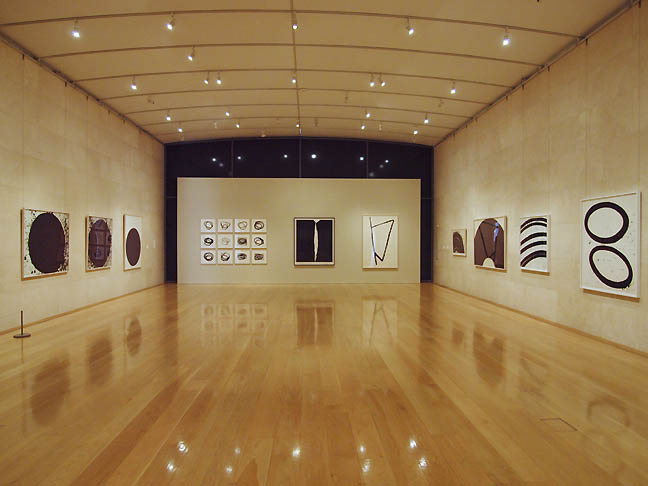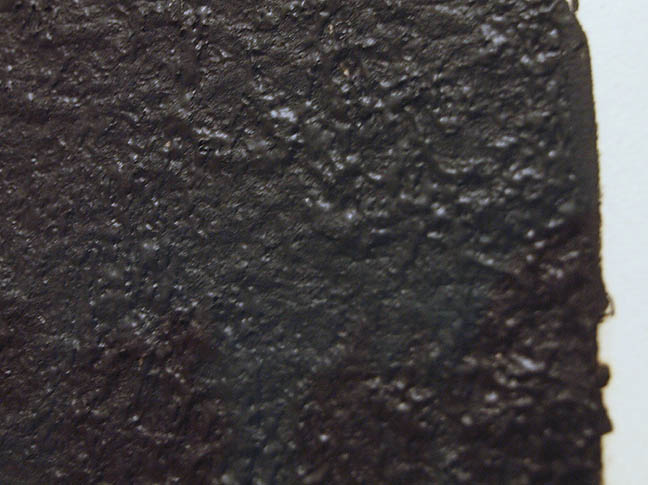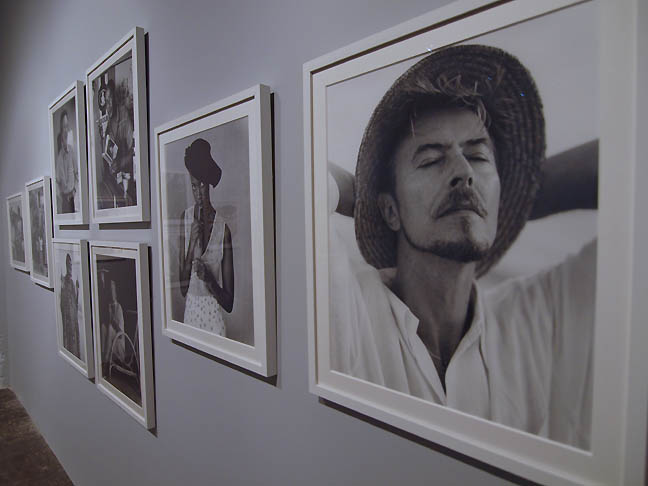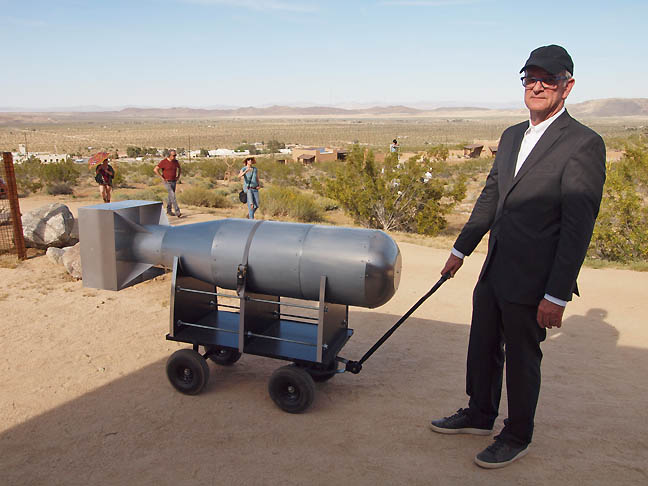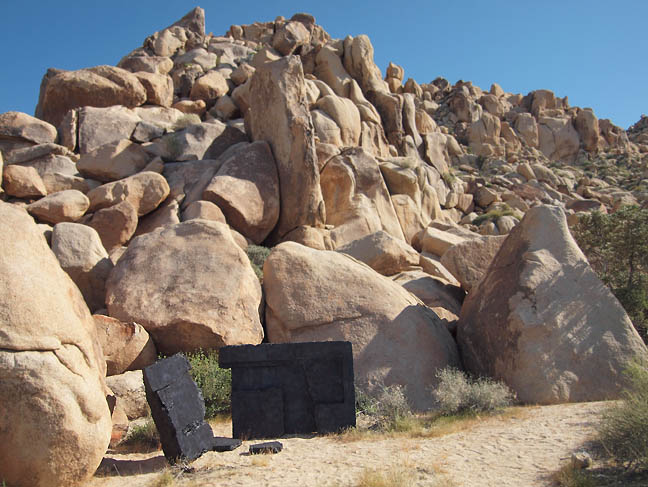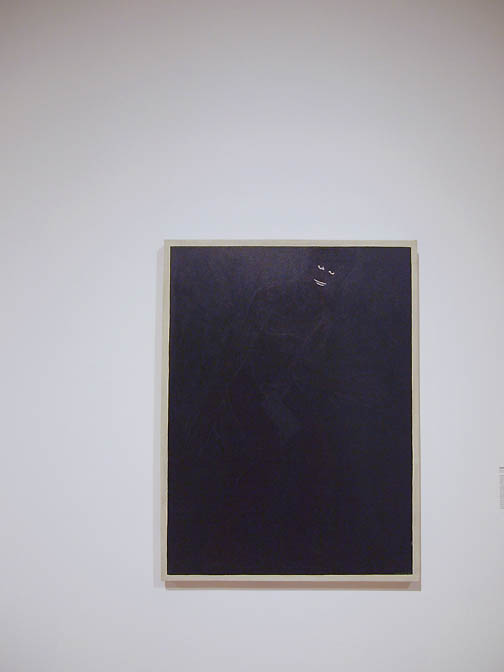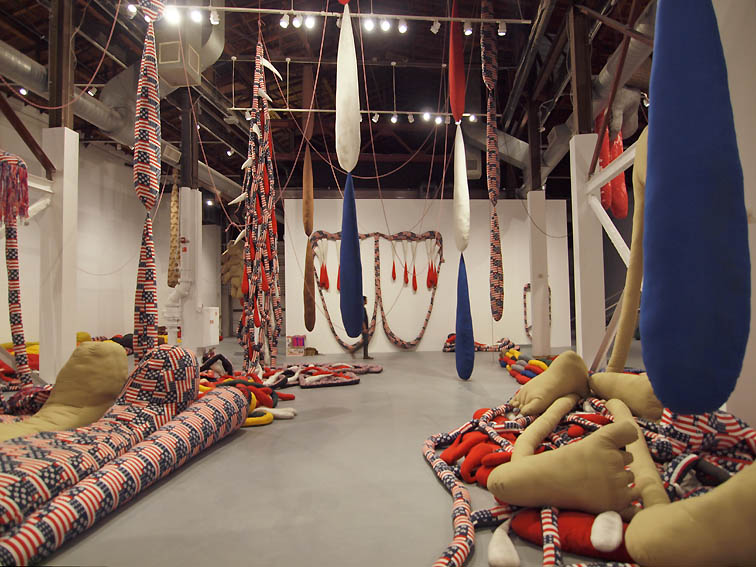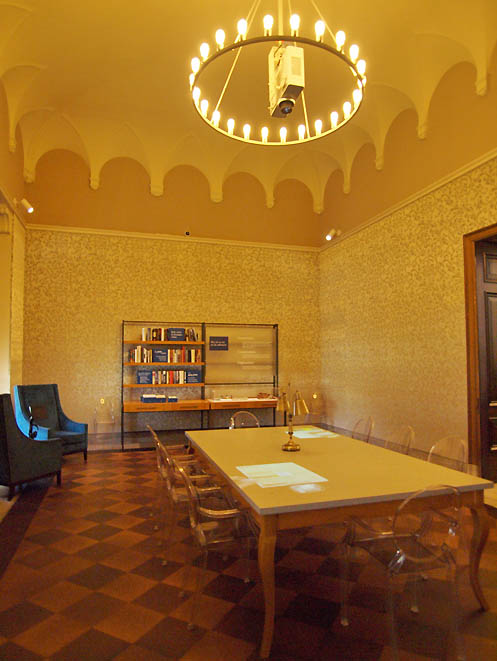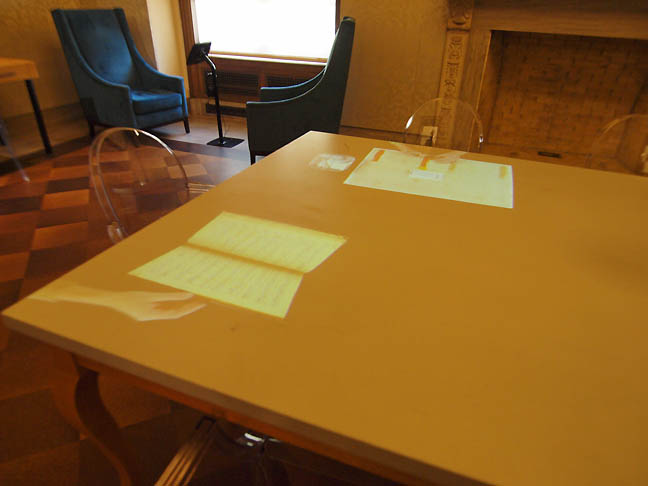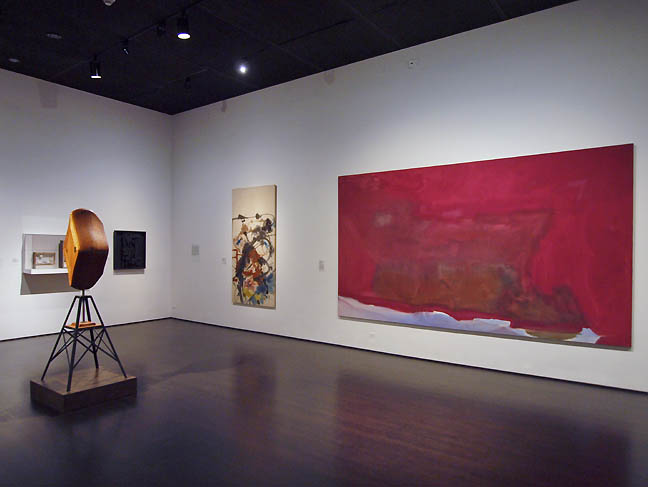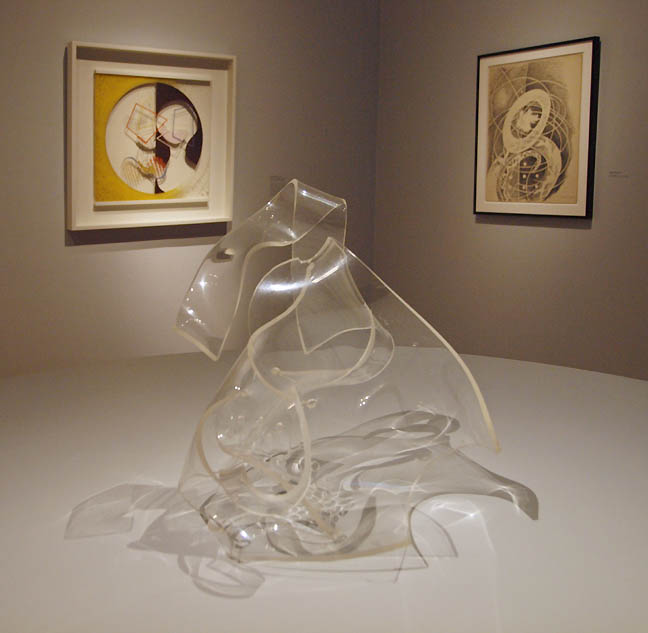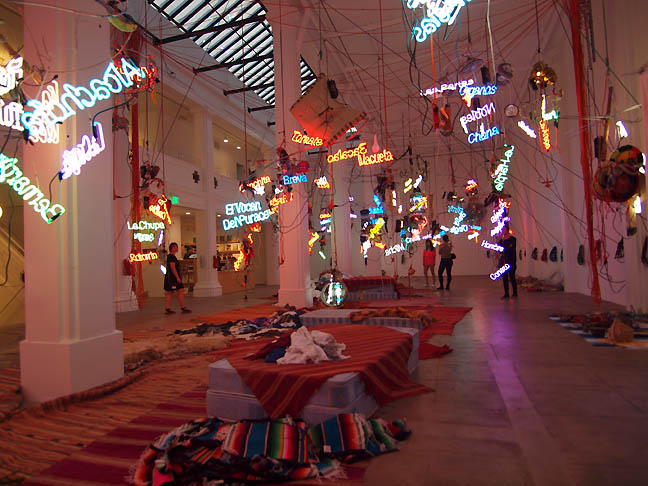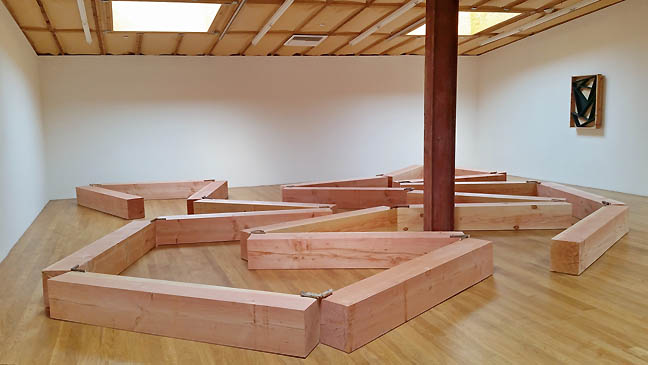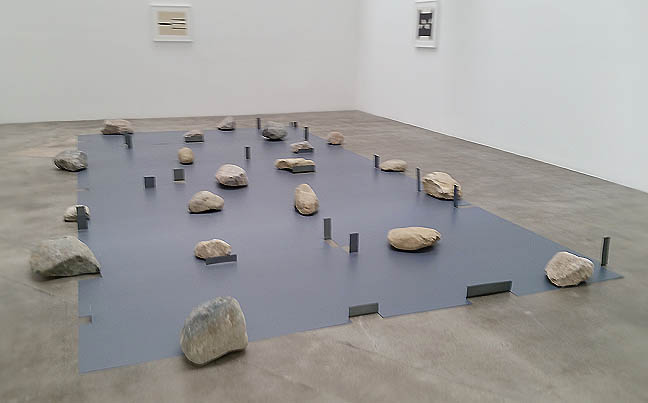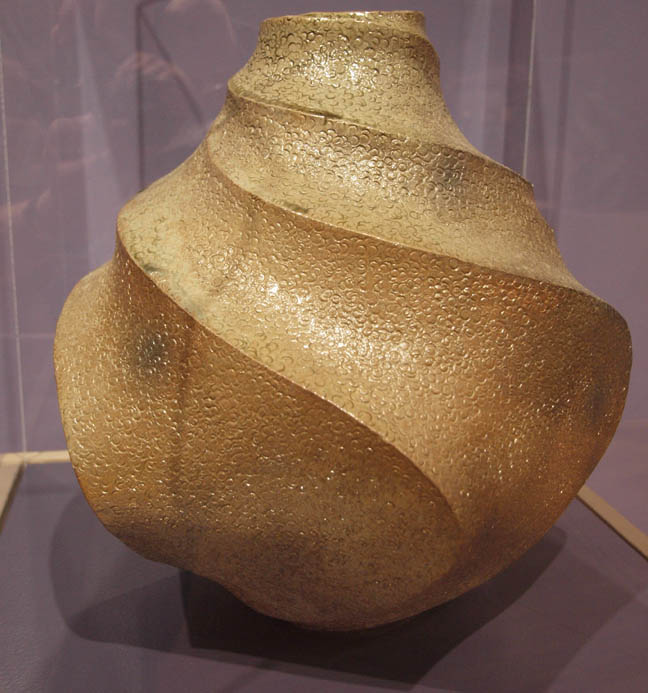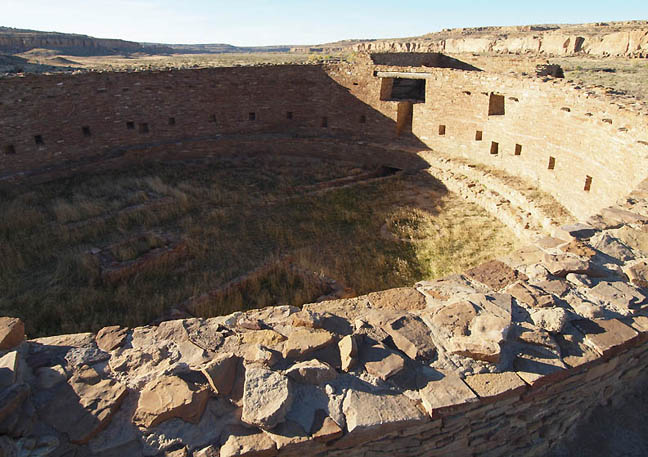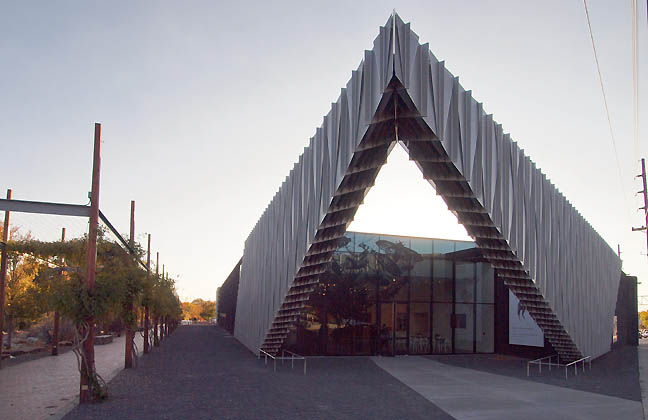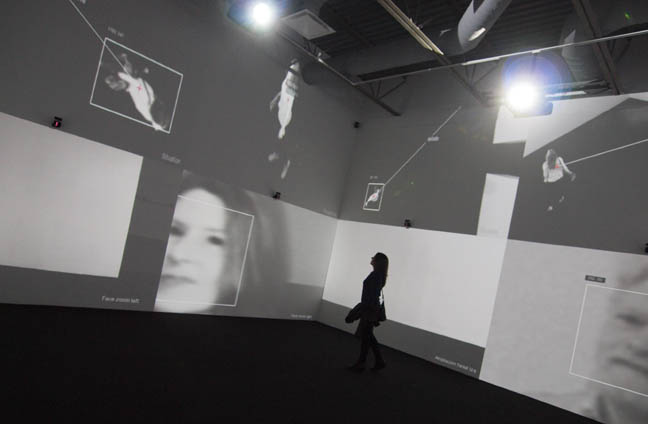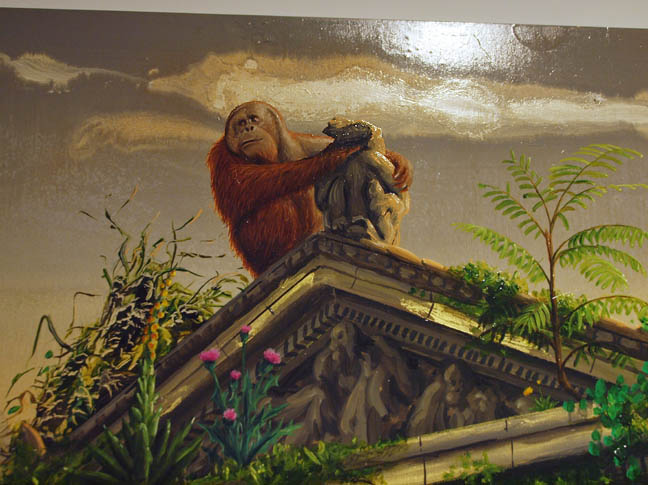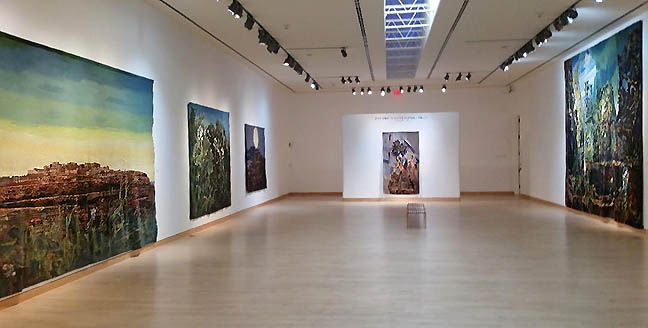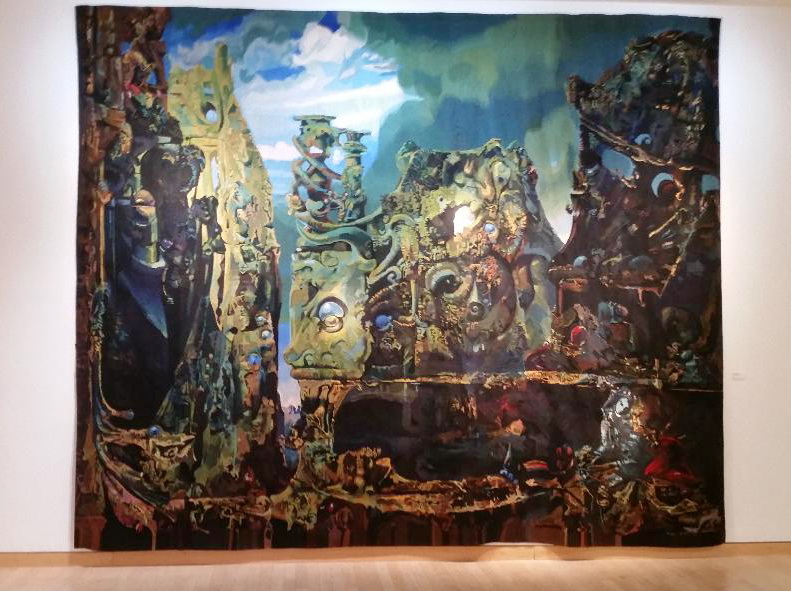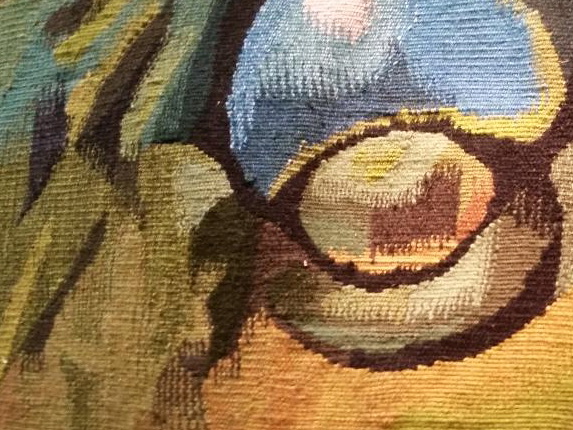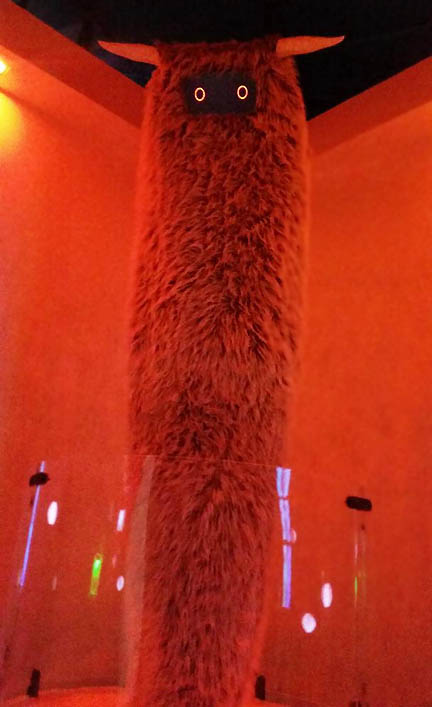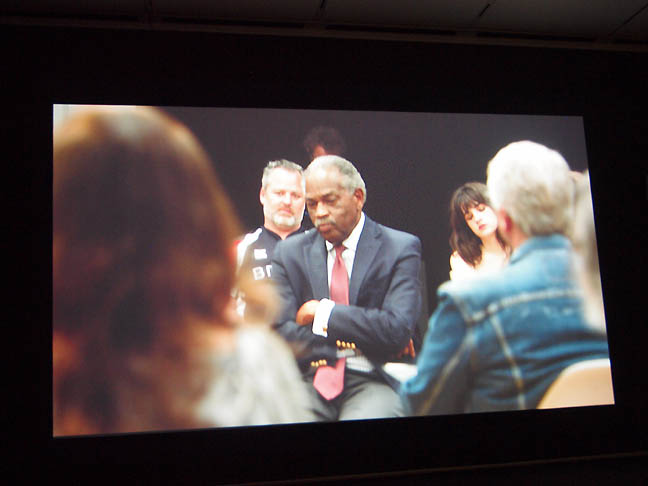
|
||
|
Portland art blog + news + exhibition reviews + galleries + contemporary northwest art
|
||
Travelogue look back at 2017 To describe 2017 as the most intense of years does not begin to do it justice. It was a year of upheavals... and the death and births of many things (my father and many others included). 2017 was also the year I logged the largest # of travel miles (all without leaving the USA or even visiting the East Coast from my West Coast base in Portland Oregon). Every time I turned around I was either unpacking or preparing for another sojourn. But now as 2018 is now solidly under way I'd like to revisit many of the most memorable things I saw and why... what is travel after all if you can't think back and take stock? A few caveats: I've left out the art fairs (seen one you've seen em all), tours of some of the best private collections in the country (privacy, even when collectors are showing off? ...sure) and studio visits (because those are private). Instead, I'm focusing on formal exhibitions because somehow those formalities felt like the true face of things. That was 2017 and it felt very formal like a courtroom, funeral or wedding... setting the tone for a 2018 where the stakes are suddenly clearer than any time I can remember.
Overall, the exhibition felt extremely visceral, almost sacred... which is where a lot of prints are handicapped in comparison to other forms like sculpture and installation art. Those other forms inherently claim territory, whereas painting and printmaking require a certain reliance on the wall. Later in the year I was able to tour Gemini G.E.L.'s facilities in Los Angeles with Serra's primary printmaking collaborator and I'll be publishing that interview in the coming month or so. I'm still catching up from 2017's schedule and events and this post is just the outside of Portland portion.
What I learned in Dallas was how Serra's prints feel almost geological in their mass and texture as a group, like continents in an ocean (normally I'd just see one or two of them at a time). It makes sense as the planet's foremost living sculptor seems to harness things we all take for granted like gravitational pull, mass and the way materials absorb light so why not tectonic plates? The show had a magnetism to it that was stronger than even some of Serra's sculptural works Ive seen at Zwirner... I kid you not... looking at these I am reminded how it is the iron in human blood that makes it red. In these prints the highly worked surfaces act like visual magnets that make me aware of my heart pumping liquid ferrous material through arteries and veins. The surfaces of Serra's sculptures are less emphasized and in many ways these prints hearken back to the sculptors early days of throwing lead.
Another one of the most memorable exhibitions I saw was Bruce Weber's photography at the CCA Dallas. The largest museum exhibition of Weber's work ever mounted he is more known for his work in fashion magazines. Here Weber's often travel tinged photographs absolutely hold up to sustained exhibition viewing without any annoying fragrances from a magazine. What I like about these photos is they don't seem to sell anything except elan vitale and an unhurried mood. It's true, to have time is the greatest of luxuries, just talk to any elderly person. Sure there are lots of famous people and the obligatory models cavorting but there is something powerful here. A world of genuinely magical moments encountered in travel. A dream like relief from the daily drudge that is a powerful. These aren't some Elysian Fields though... often there is a sense of intimate moments here... a reverie that comes from breaking routine.
In particular the photo of David Bowie and Iman meeting Nelson Mandela alone is amazing (see here, and scroll down). Bowie seems massively honoured and giddy... Iman has infinite poise and Mandela comes off like the coolest person who has ever lived, giving Bowie some tips on being cool knowing full well how funny that is. Its a study in self-awareness and just reveling in the moment... it would be great even if the subjects were not who they were.
Later I visited Joshua Tree California for their Treenial weekend art festival. They have only staged the event twice and it feels approachable and relaxed event, not some overheated art market throwdown (all the heat is provided by the very real desert). I found it easy to strike up a conversation and I was particularly impressed with Stephen Whisler's Walking the Bomb piece. As paripatetic performance sculpture the desert environment only enhanced the implied threat... and the artist, dressed as if hes going to either a funeral or refereeing an event presented a perfect set of mixed messages. One criticism, much of the other work seemed like it lacked scale or concentration though... more like an gypsy camp that went to art school (there is a charm to that). There was also an ad hoc aspect to much of the work, which lacked a sense of durability, though I can say the same for most contemporary art today. Overall, the sense is that the Treenial could distinguish itself further and I suspect it will. It felt homey, like a family reunion cookout and that is something rare in contemporary art these days.
One piece that definitely didnt feel ad hoc or lacking in scale was Sonja Schenk's Red Shift. A bit like a burnt out fortification next to a hill of Joshua Tree boulders one had the sense that this could be a weapons test site or a drug lab that that was melted in some horrible accident then put in a car crusher. The black object is actually infrared painted, opening up further viewing options at night time as the rock absorbs heat energy during the day, releasing it at night. It also felt like a 3rd cousin to Richard Serra's work, with an enhanced air of mystery. Art in the desert really shouldnt feel familiar and this definitely felt like a visitor from another planet, the remnants of a secret lab and perhaps some dark magic cursed site. I'd call that a success. Overall, the Treenial isnt as big a production as things you find in Santa Fe or Marfa but it feels like a beginning.
The Kerry James Marshall Mastry exhibition at MoCA was extremely memorable. In particular, I found some of the earlier work to be a peak experience... especially the painting Invisble Man. It is simply more subversive and edgier than the later works... which were good but felt like more like postcards illustrating liberal ethics or at least scenes they would applaud. That isnt Marshall's fault, as those early works would be difficult to just pump out now that he's successful. I like those later "postcards" but I live in Portland, where everyone is trying to collect those kinds of ethical values merit badges and display them, whereas Invisible Man implicates the viewer... gives us some hell. It is simply more challenging and powerful. I applaud Marshall's overall success with this show but there is something about the stark invisible man that says... you arent ever going to see me, dont think you can. That's a strong work, best painting relating to race of the 20th century... so good it took till the 21st century to get its due.
Another strong thing was Sterling Ruby at the Geffen Contemporary... I liked this much better than the grotty ceramics that the art market loves. Instead, this was a warehouse playground of seemingly misplaced patriotism... it felt akin to the times. Big toys, not grown up... a playground for some giant patriotic vampire baby in diapers. I preferred it to the Carl Andre show. I love minimalism but somehow Andre is better in smaller doses... it ceases to be minimal when there is that much of it. I prefer Judd, Flavin and Irwin... Andre is more controlling than those other artists but the Zinc plate works still held up, the blocks and bricks felt more like a spent force when seen with other similar works. Overall, there was something about Ruby's use of the Geffen's warehouse that felt spot on that a slicker museum space would not have... there was a sense of storage and the passage of time... a more underground presentness that a warehouse affords. In a slicker more finished museum like MoCA just blocks away it would have simply felt like a rich person's toy collection. Not so here so MoCA gets kudos for siting the work properly... less so for the Andre show.
This was yet another non white box piece the work replicates the typical goings on at the Huntington Library's archives through studying the hands of archivists. It felt practical and spectral at the same time in the richly appointed room with its golden light and upholstery. 2017 furthered my dislike of a standard white box gallery space for sure. It requires more intention from the artist and more work from the curator but just stumbling across this and having to ask if it is art or not gave the piece a head start in the race to artistic relevancy.
The special exhibition Maholy-Nagy Future Present at Lacma was much more rewarding than the permanent collection. An artist who didnt distinguish between Design and Art (that's possibly the true meaning of Modernism), who liked to work in most mediums felt energetic and inventive. His non painting works stole the show, while the paintings looked like studies for the sculpture and installations. It was an interesting reversal because the art market gives more value to the wall based works.
The opening exhibition Future Shock seemed to extend the architectural messaging with a long list of established somewhat apocalyptic artists like Tom Sachs, Andreas Gursky, Doug Aitken and Alexis Rockman but its the inclusion of Rafael Lozano-Hemmer's Zoom Room that really makes the show convincing. Zoom Room is an active artificial intelligence driven surveillance gallery. In it the visitor is observed even more than the work itself can be, an excellent and instructive inversion. Any time one hits the streets in places like New York or London we expect this same level of tracking but seldom do we get to see AI surveillance as it works.
One of the best exhibitions I saw in 2017 was a Max Ernst tapestry show at Peters Projects in Santa Fe. Basically, a collaboration between Ernst and master weaver Yvette Cauquile-Prince I liked how multiples were produced of many of Ernst's early iconic paintings. In many ways they become stronger, stranger and obviously larger by translating them into another medium and it was an analougous to the way digital mediums translate visual sources into pixels. In this case the original source works felt like precious hidden secrets and rather occult but as large tapestries they are iterative and multiple... more open source, which is another nod to automatism and unconscious bubbling up rather than the will of the artist. Can one really own the unconscious? What is gained here is the way they become an entire engrossing world and far more tactile.
Viewable as a huge presence from a distance these tapestries are better than murals and the texture actually invites closer viewing that the comparatively smaller original paintings cannot. For example the original The Eye of Silence from 1943-44 at the Kemper is just over 56 inches wide, this version is over 12 feet wide and the weaving process acts as another surface intervention over the original decalcomania technique (also a way of achieving some automatism). What's more the tapestry's drape and furls of the fabric also have a more personal presence... instead of the slight of hand magic trick that one gets from surrealist painting techniques you get the methodical hand of the master weaver which makes the strange imagery even stranger. Like Jazz involving a weaver makes this iterative... Ernst becomes like a band leader like Count Basie and shows the power of the image itself.
Really this is no different than the way Marcel Duchamp commissioned copies of his most famous works, turning the art making process into an iterative one... similar to the way a musician can have a studio version of their music then perhaps a live version. These tapestries feel like the live version.
Posted by Jeff Jahn on February 28, 2018 at 9:36 | Comments (0) Comments Post a comment Thanks for signing in, . Now you can comment. (sign out)
(If you haven't left a comment here before, you may need to be approved by
the site owner before your comment will appear. Until then, it won't appear
on the entry. Thanks for waiting.)
|
| s p o n s o r s |
 |
 |
 |
 |
 |
 |
 |
 |
 |
 |
 |
 |
 |
 |

|
Site Design: Jennifer Armbrust | • | Site Development: Philippe Blanc & Katherine Bovee | |


